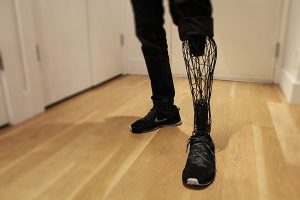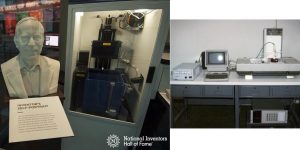3D printing, also known as additive manufacturing, is the process of making a 3D object from a digital file and is heralded as one of the most ground-breaking technologies of the 21st century. What many don’t realise is that this technology has been under development for nearly 40 years and has found application in a diverse range of sectors, revolutionising many aspects of science and industrial production. Through working closely with our clients, we are fortunate enough to learn about some of the latest developments and insights across sectors – such as the fast-moving 3D printing market. We wanted to take a step back and look at just how far the industry has come in a relatively short space of time, and its rapidly expanding, innovative applications.
The evolution of 3D printing (so far)
3D printing began as an idea in the 1980s, stemming from pioneer Hideo Kodama. In 1981, Kodama discovered a way to print layers of material to create a 3D product, but was unable to get the patent for the technology approved. Then in 1986, Chuck Hull, who is referred to as ‘the father of 3D printing’, created a prototype for a process called stereolithography (SLA), which involves making solid, 3D objects by printing thin layers of UV-curable material. Hull then patented the first SLA printer.
Soon enough, companies began commercialising 3D printing. At first, the technology was cost prohibitive and adoption was restricted to high-cost, low-volume product production, making it suited to prototyping new products in the aerospace, automotive and medical industries. Fast forward to 2005 when early patents began to expire and more and more technologists got in on the act, making 3D printing more mainstream and a cost-effective technology. The cost of 3D printers has decreased drastically in recent years, making it accessible to businesses across many industries. Today, you can purchase 3D printed shoes, jewellery, pens and even vehicles.
How 3D printing works
The burning question – how does 3D printing actually work? 3D printing technologies create physical objects from digital designs layer by layer, but each using its own proprietary method. These include: vat photopolymerization, material extrusion, material jetting, binder jetting, powder bed-fusion, direct energy deposition and sheet lamination. Each method has its own strengths and weaknesses, but the primary differences are build material, material distribution method and binding technique. As an example, vat photopolymerization uses a photopolymer (build material), and it rests in a vat (material distribution method). The curing light is provided by a laser that will selectively choose which areas to solidify (binding technique).
3D printing offers a number of advantages compared to traditional approaches to manufacturing. Because items can be assembled directly from a digital model, precision increases and it enables the rapid, efficient construction of customised components. It is distinct to older manufacturing techniques, which usually rely on removal (by cutting, drilling, chopping) instead of addition. Plastic is the most popular material but metal, wood, resin, ceramic and wax are also used today.
Expanding capabilities
New technologies continue to improve the uses of 3D printers, bringing various industries to greater  heights of 3D printing success. We’re always learning about these new developments through communicating our clients’ innovative work. For example, metal powder-based techniques are being used to manufacture products for use in biomedical, aerospace and automotive applications. Perhaps some of the most fascinating uses of 3D printing are within biomedical, with high profile cases of 3D printed prosthetics, skin for burn victims, facial reconstruction parts for cancer patients and airway splints for infants.
heights of 3D printing success. We’re always learning about these new developments through communicating our clients’ innovative work. For example, metal powder-based techniques are being used to manufacture products for use in biomedical, aerospace and automotive applications. Perhaps some of the most fascinating uses of 3D printing are within biomedical, with high profile cases of 3D printed prosthetics, skin for burn victims, facial reconstruction parts for cancer patients and airway splints for infants.
What’s next?
It’s predicted that 3D printing will continue to develop rapidly, and in the near future we will have fully automated, high speed, large-quantity additive manufacturing systems that are economical. 3D printing is an unstoppable force and will reshape custom manufacturing, as well as product innovation and might even change all of our everyday lives. 3D printed pasta anyone?
If you would like to find out more about how we help our clients communicate their technologies, please get in touch.
By Katie Hall, Junior Account Executive, The Scott Partnership.







